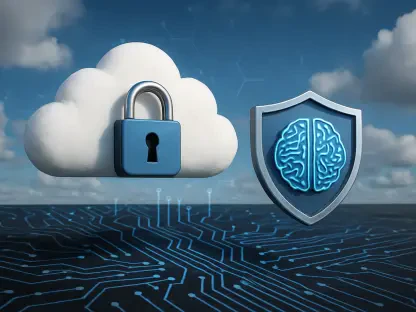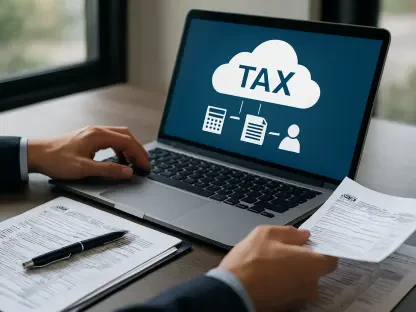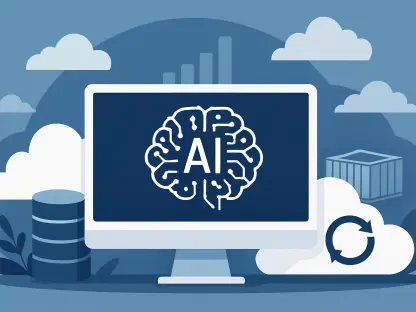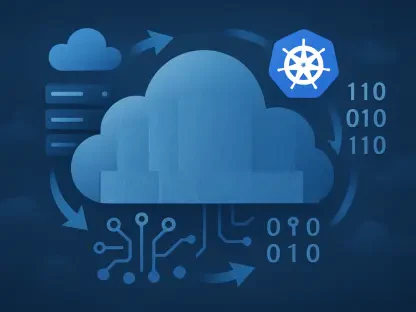The rapid pace of innovation within tax technologies presents a unique opportunity for tax departments to modernize their operations. When organizations embark on ERP cloud migrations, they can strategically integrate tax tools to enhance functionality, automation, and leverage new technologies such as artificial intelligence. This exploration delves into how ERP cloud migrations can drive tax transformation efficiency, highlighting the importance of consolidating tax and ERP systems. By evaluating existing tax platforms and ensuring seamless integration with ERP systems, businesses can optimize workflows, streamline processes, and improve overall efficiency.
The Need for Tax and ERP System Integration
Tax departments often struggle with disconnected, inefficient systems that hinder their ability to keep up with technological advancements. To achieve meaningful transformation, organizations must re-evaluate existing tax platforms to identify gaps and overlaps. Ensuring that all tax tools integrate seamlessly with each other and the business is crucial for optimizing workflows and improving overall efficiency. Integrating tax tools into ERP systems is akin to embedding core infrastructure in construction. Over time, digital platforms such as ERP and tax solutions become indispensable to the business, making it daunting to replace them. This often results in organizations settling for suboptimal solutions due to the perceived high cost and risks of system replacement.
By consolidating tax and ERP systems, organizations can address inefficiencies and streamline their operations. For instance, integrating tax tools into ERP systems can reduce manual interventions, improve accuracy, and enhance collaboration between tax and other departments. This integration facilitates better data management, ensuring that critical tax information is readily available and easily accessible. Furthermore, a unified system can improve decision-making processes by providing real-time insights into tax-related matters. Ultimately, the integration of tax and ERP systems enables businesses to stay competitive in a rapidly evolving technological landscape while ensuring compliance with ever-changing tax regulations.
Automating Processes and Best Practices
Modernizing tax operations is not just about keeping up with technology changes but also about optimizing workflows and improving overall efficiency. The integration during ERP upgrades minimizes disruption and leverages the shared resources required for both tax and ERP transformations. Automation of processes and best practices during ERP cloud migrations can significantly enhance tax operations. By embedding tax tools into ERP systems, organizations can streamline their workflows, reduce manual interventions, and improve accuracy. This strategic alignment can enhance collaboration, governance, and compliance, preparing the organization for data readiness, compliance issues, and business continuity.
Automation allows businesses to standardize and simplify complex tax processes, leading to increased productivity and reduced errors. For example, automated tax calculations and reporting can save time and resources, allowing tax professionals to focus on more strategic tasks. Additionally, automation can facilitate better compliance management by ensuring that tax filings are accurate and timely, reducing the risk of penalties and audits. Implementing best practices, such as regular system updates and employee training, can further enhance the effectiveness of automation. By continuously refining and improving automated processes, organizations can maintain a high level of efficiency and adaptability in their tax operations.
The Dual-Track Modernization Strategy
ERP upgrades present a perfect opportunity to fully modernize tax operations. Even though the need for a unified cloud ERP is recognized, with 40% of tax professionals considering it an ideal end state, timing remains a challenging factor. Organizations should consider a dual-track modernization strategy where ERP cloud migration is aligned with tax platform upgrades. This dual-track approach minimizes disruption, reduces the length and impact of upgrades, and ensures a swift return to productivity. Addressing both ERP and tax system upgrades simultaneously makes logical sense, as it leverages shared transformation resources and ensures efficient and effective decisions impacting both systems.
The dual-track strategy requires careful planning and coordination to ensure that both ERP and tax system upgrades are executed smoothly and efficiently. This involves aligning project timelines, resource allocation, and stakeholder involvement to avoid conflicts and ensure successful implementation. By synchronizing upgrades, organizations can maximize the benefits of both ERP and tax transformations, achieving greater operational efficiency and cost savings. Moreover, this approach fosters a culture of collaboration and innovation, encouraging cross-functional teams to work together towards common goals. Ultimately, the dual-track modernization strategy enables businesses to stay agile and responsive to changing market conditions and regulatory requirements.
Leadership Alignment and Strategic Planning
From a leadership perspective, aligning leaders on core issues during ERP migration is crucial. During these periods, it is an opportune moment to discuss and collaborate on challenges such as data compliance, readiness, security, business continuity, and process automation. This holistic view across all platforms allows leveraging shared transformation resources, ensuring efficient and effective decisions impacting both ERP and tax systems. Strategy and preparation are crucial in minimizing disruptions caused by major upgrades. Foresight and early intervention can help organizations manage workflow and governance changes efficiently. This thoughtful approach ensures that simultaneous tax and ERP upgrades result in optimized outcomes with minimal disruption.
Leaders must prioritize communication and collaboration to ensure that all stakeholders are aligned on the objectives and expectations of the ERP and tax system upgrades. Regular meetings and updates can help maintain transparency and address any concerns or issues that arise during the implementation process. Additionally, leaders should foster a culture of continuous improvement, encouraging employees to provide feedback and suggestions for enhancing the integrated systems. By taking a proactive approach to strategic planning and leadership alignment, organizations can navigate the complexities of dual-track modernization more effectively, ultimately achieving greater efficiency and long-term success in their tax and ERP operations.
The Role of SaaS and Cloud Solutions
The SaaS model has revolutionized how business tools are delivered, underscoring the importance of migrating to the cloud to stay competitive. Many tax departments still operate reactively, undermining their potential efficiencies. Tools and technologies available could significantly help these departments evolve to proactive and sophisticated operations. Adopting cloud solutions unlocks advanced capabilities for ERP systems and enables comprehensive tax transformations. Businesses are encouraged to plan thoroughly, considering their tax teams from the onset of digital transformation initiatives to maximize ROI and ensure smooth, integrated operations.
Cloud solutions offer numerous benefits, such as scalability, flexibility, and cost-efficiency, making them an attractive option for businesses looking to modernize their tax and ERP systems. By leveraging cloud-based tools, organizations can quickly adapt to changing regulatory requirements and market conditions, ensuring continued compliance and operational efficiency. Additionally, cloud solutions can facilitate better data management and analytics, providing valuable insights that can inform strategic decision-making. As more businesses embrace digital transformation, the adoption of SaaS and cloud solutions will become increasingly essential for maintaining a competitive edge in the market.
Training and Onboarding Challenges
Innovation in tax technologies is accelerating, creating a unique chance for tax departments to modernize their operations. When organizations decide to migrate their ERP systems to the cloud, they have a strategic opportunity to incorporate advanced tax tools. This integration can boost functionality, automation, and use new technologies like artificial intelligence. This discussion explores how moving ERP systems to the cloud can enhance tax transformation efficiency, emphasizing the importance of merging tax functions with ERP systems. By assessing current tax platforms and ensuring they integrate smoothly with ERP systems, businesses can streamline workflows, optimize processes, and enhance overall efficiency. Consolidating tax and ERP systems during such migrations is crucial for achieving operational improvements, making sure that tax processes are not only automated but also more accurate and timely. Businesses that adopt these integrated solutions can expect to see significant gains in productivity and accuracy, positioning themselves for future growth and adaptability in an ever-evolving technological landscape.









